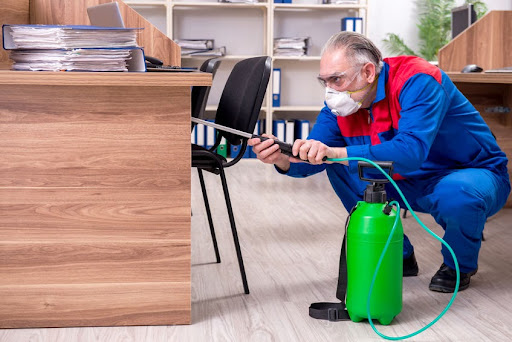
If you’re tired of pesky bugs and other pests invading your home, it’s time to take back control. There are many options available for pest control, but learning how to do your own home pest control can be the most cost-effective solution if the pest problem is small and not too persistent.
If you’ve tried to do the pest control yourself and it’s not working, or if there is a persistent problem that requires more than just small measures, you’ll need to book a reliable pest control service to get rid of the pests. This is because there are some pests that can cause a lot of damage to your home and require specialized equipment, knowledge, and expertise.
Here are some helpful tips on how to do your own home pest control:
Identify the pest
The first step in learning how to do your own home pest control is identifying the type of pests that are invading your home. This will help you figure out what type of measures you need to take.
To identify the type of pest you have, look for their nests or signs that they’ve previously been in your home. For example, if there are holes chewed into floorboards and furniture upholstery it’s likely that mice or rats are living inside your house.
Once you have figured out what pest is living in your home, you’ll be able to choose the best ways of doing your own home pest control.
Determine The Type of Pest Control
There are a number of different types of pest control and it’s important to determine which one you need in order to get rid of the pests. This will help you figure out what tactics you’ll want to use for your home pest control measures, such as whether or not traps should be used and how quickly they need to work.
For example, if you have a mouse or rat problem, it’s likely they’ll be able to chew through poison bait and will need traps. If there are cockroaches invading your kitchen cupboards, household cleaners such as bleach might work best since roaches can withstand many types of insecticides.
Here are the different types of pest control methods you can use for different types of pests:
Termites – You can use termite baiting stations for this type of pest, which is where termites are drawn to the station and then ingest poison that’ll kill them.
Roaches – An insecticide spray or bait can be used to get rid of roaches, but make sure it specifically says that it is safe for use around food storage areas.
Mice & Rats – Traps are the best way to catch these pests since they are able to chew through poisons and baits. Just remember not to use poison if there might be children or pets that could get into it.
Ants & Spiders – Insecticide sprays can be used for this type of pest, as well as getting rid of their nests if they’re invading your home from outside.
Get Rid of the Pests
Getting rid of your pests is the most important part of how to do your own home pest control. You can use traps, sprays or baits for this process depending on what type of pest you’re dealing with and how quickly they need to be killed off.
If you have children or pets that could get into the traps or poisons, make sure to place them in places where they won’t be able to get at it.
For example, if you’re using poison bait for rodents and there are children in your home you’ll need to find a way of luring the mice out without allowing your kids close enough that they can ingest any of the poison.
When you’re dealing with any type of pest, there are a number of evacuation measures that need to be taken in order for the extermination process to work properly and effectively get rid of your pests.
Make sure that all pets and children are safely out of the home before attempting to do your own home pest control by using sprays or baits around their usual hiding places.
The Next Step
Now that you’ve learned about how to do your own home pest control, it’s time for you to get started. Remember that the most important part of this process is identifying and getting rid of each type of pests quickly so they don’t have a chance to come back. If you’re still unsure of how to do your own home pest control, contact a professional pest exterminator.
By doing these simple steps you’ll be able to successfully and safely get rid of your pests and keep them away for good.




 POSTED BY
POSTED BY 

